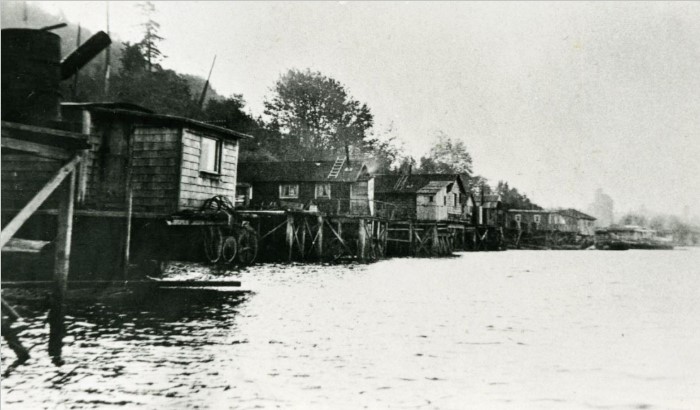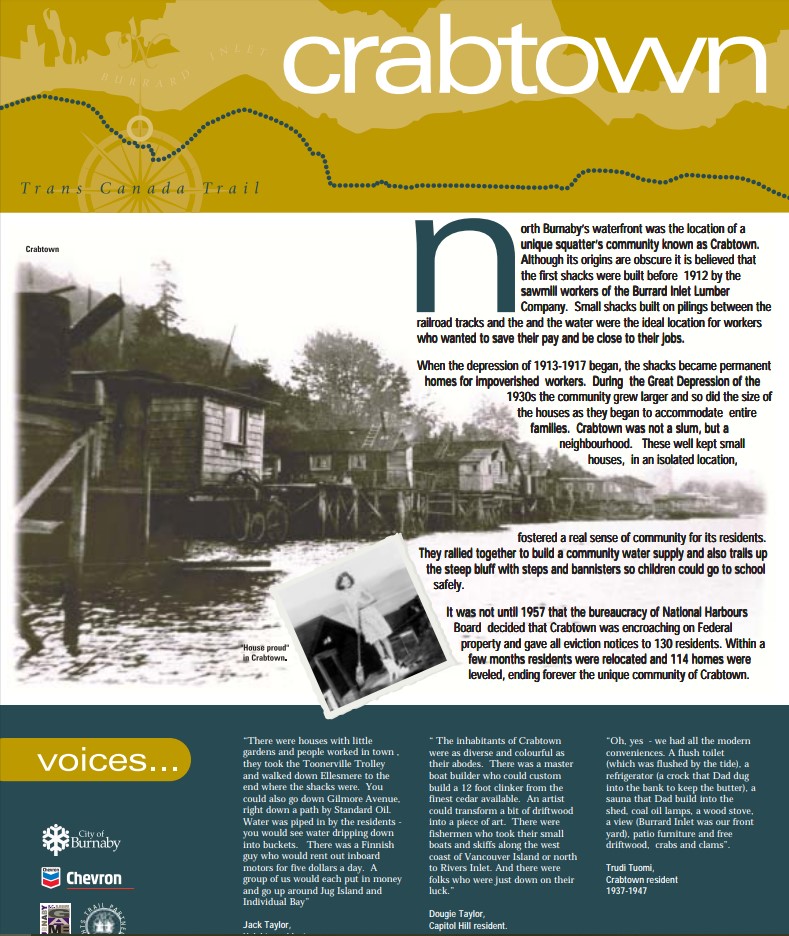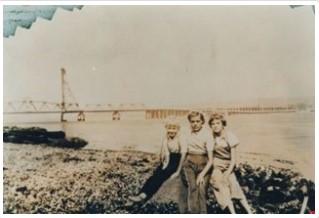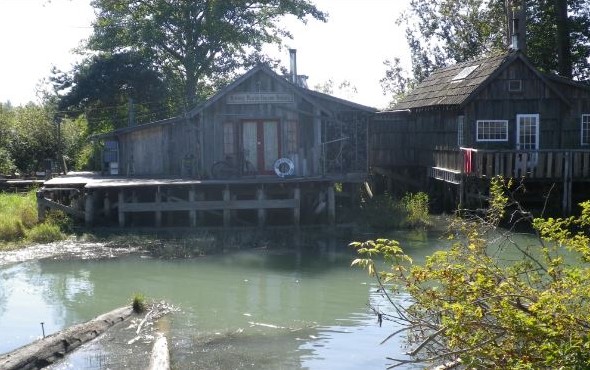We’ve been taking advantage of the lack of traffic on the roads to take Pickles, our Chiweenie on some new trails. This week we ended up in North Burnaby, parked at the bottom of Boundary and walked along the Trans Canada Trail to Willingdon.

While I’m familiar with the squatters at Maplewood Flats and Cates Park on the North Van side of Burrard Inlet, I’d never heard of Crabtown, a collection of squatters’ homes built on raised pilings between the railway tracks and the water.

According to the plaque—all that’s left of Crabtown—it was built by sawmill workers during a housing shortage around 1912. When the Depression hit in the ‘30s, families moved in and Crabtown grew in size and population. By 1957, the little town had 130 people living in over a hundred houses. That year, the National Harbours Board evicted the lot for squatting on federal land, and demolished their homes.

Dan Francis has done quite a lot of research on the history of squatting in Burrard Inlet and has gathered up first-hand accounts of the area.
One of them, he writes on his blog, was by the late, great Chuck Davis who moved to Crabtown in 1944 when his dad paid $300 for a shack along the boardwalk. Chuck told Dan that he loved the place and when a train went by the whole shack trembled.

If you’d like a sense of what living in a squatters’ community is like, check out Finn Slough



